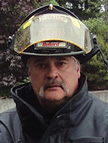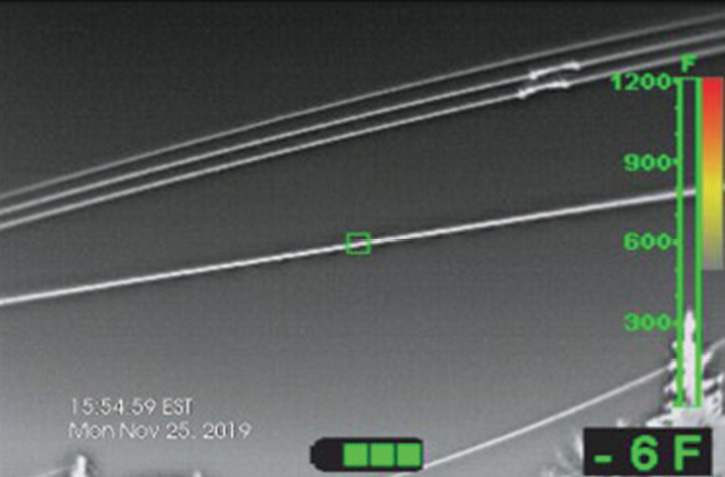
Thermal Imaging | Manfred Kihn
The constant theme of this column is to train everywhere and as often as possible. In February 2020, I wrote “Train Where You Can” about turning your fire station into a training facility.

I’d like to expand on that column based on the requests I have received asking for information on how to set up an in-house thermal imaging training program or ideas on how to conduct TI training.
Let’s first review NFPA 1408, Standard for Training Fire Service Personnel in the Operation, Care, Use and Maintenance of Thermal Imagers, and what it states about Fire Service Thermal Imager Training Policy and Procedures.
Chapter 4
4.2.1. The authority having jurisdiction (AHJ) shall establish written policies for TI training that meet the requirements of this standard.
4.2.2. The policy shall address the training requirements for types of incidents where TIs may be used.
4.2.3. The training policy shall include an annual review of member competence in TI technology, operation, application, use and limitations, care and maintenance.
4.2.4. TI training shall include practical evolutions, using TI.
4.2.5. Training and evaluation documentation shall be maintained by the AHJ.
4.2.6. The training program shall include both individual and crew training.
4.2.7. Members shall be provided with TI training and education before being permitted to operate TIs per AHJ.
4.2.8. Before new or unfamiliar TIs are placed into service, training and education relating to those imagers shall be provided for all affected members.
4.2.9. Members shall be provided with classroom education and hands-on familiarization in TI functions before being permitted to operate TIs in IDLH atmospheres.
Here’s what NFPA 1408 states about Thermal Imager Training Program Components:
chapter 7
7.1. Use and Limitations. All participants using TIs shall understand their use and limitations.
7.1.1. All participants using TIs shall be able to interpret the colors displayed and the temperatures or temperature ranges associated with the colors that are specific to the TI being used.
7.1.2. All participants using TI shall understand how the temperature gauge measures temperatures specific to the TI being used.
7.1.3. All participants shall understand the functions, modes and use of accessories to the TI being used.
7.1.4. All participants shall understand how to operate advanced features specific to the TI being used.
7.1.5. All participants shall understand how to continue operations in the event of a TI failure.
7.1.6. All participants shall understand image interpretation and misinterpretation, including the following:
- Distance to view and recognize an object is dependent upon the environment you are operating in.
- Image clarity is dependent upon the environment and conditions such as rain, snow, heat.
- Image will be compromised due to depth perception.
- Mirrors and shiny objects all cause reflectivity, thus not providing accurate information to the participant.
- The ability to see thermal energy through a window is dependent on the type of IR sensor, the type of glass, and the thermal conditions.
- False readings.
- Understand the emissivity values of materials as they pertain to two or more different materials in the imager’s field of vision.
- Water will give a reflective image, thus not providing accurate information to the participant.
Related Content
- Thermal Imaging: Train Where You Can
- Thermal Imaging: Heat Signatures Can Be Masked
- Thermal Imaging: Knowing Your Thermal Imager
7.1.7. The participant shall have knowledge of how to use a TI for the following applications:
- Search
- Fire Attack
- Investigations
- Overhaul
- MVA
- Size-up
- Hazardous materials incidents
- Electrical emergencies
- USAR operations
- Rapid Intervention Crew
- Accountability
- Rehab
- Participant Safety
- Ventilation
- Apparatus placement
- Stream placement
- Exposure protection
- Water rescues
- Assisting other agencies i.e. law enforcement
- Wildland
- Building construction
- Training
- Other topics identified by the AHJ
Note the word shall, because in a court of law this becomes a legal term, so take due diligence into consideration.
Now let’s get creative as to what you can do in-house, as firefighters are an inquisitive group and the firehouse, as you know, has many areas where you can learn the basics of thermal imaging. After you have played with the TI and are familiar with the on/off procedure, changing the battery, and how to manipulate the advanced features with your bare hands, it’s time to do the same routine with your gloves on. After all, you do wear gloves as a firefighter. It’s not so easy with your gloves on.
Create some quick drills either individually or as a crew and walk around the firehouse to “see” what you can find or detect; obviously, heat signatures are the important ones. They can be bright and obvious to not so obvious where you can miss them if you didn’t understand what you were looking at. Place a space heater behind a closed door and wait several minutes for the door to heat up and see what happens. Do you see a V-shaped heat signature working its way up the door? Have your firefighters conduct a search and see if they recognize the heat pattern prior to opening the door.

1 Use your TI to identify the infrared radiation coming from overhead power lines. (Photo courtesy of Bullard.)
Reflections can be found off shiny objects or surfaces such as the side of the fire apparatus, windows, dry erase whiteboards, smooth tile, painted concrete flooring, or water on the floor. Set up a TI obstacle course for use of depth perception and distance to view in the apparatus bay floor.
Go outside the firehouse and look for overhead power lines, which you can assess for aerial apparatus placement; or, look for emissivity differences from neighboring buildings.
A TI is a great investigative tool used for fire inspections or when you are out conducting preplans or for building construction. If you see something you do not recognize, investigate it until you understand what is causing it and why it appeared the way that it did on the TI.
Once you are comfortable using your TIs, take them to your live-fire training grounds. Keep the first fires small and simple so you can learn about colorization, temperature measurement, and gain states and understand what they mean to you. Keep in mind it’s important to watch the stages of fire growth and flow paths to learn about fire dynamics.
Don’t overcomplicate your in-house training program; make it fun yet challenging. You can cover some basic principles with minimal time and effort. Make using your TI routine and seek answers for the things you encounter that you do not understand. As stated in NFPA 1408, all firefighters shall be trained and educated on using a TI. It’s only through practice and experience that knowledge is gained.
Manfred Kihn is a 19-year veteran of the fire service, having served as an ambulance officer, emergency services specialist, firefighter, captain, and fire chief. He has been a member of Bullard’s Emergency Responder team since 2005 and is the company’s fire training specialist for thermal imaging technology. He is certified through the Law Enforcement Thermographers’ Association (LETA) as a thermal imaging instructor and is a recipient of the Ontario Medal for Firefighters Bravery. If you have questions about thermal imaging, you can e-mail him at manfred_kihn@bullard.com.

